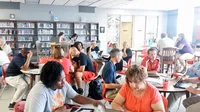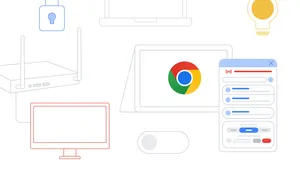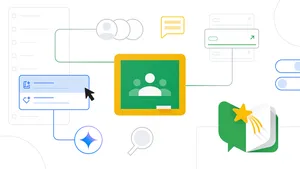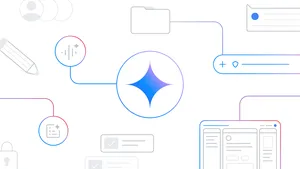How teachers and students can develop learning skills for school – and beyond

Editor’s note: As part of the ExploreEDU event series, schools are working with Google for Education Premier Partners to throw open their doors and invite neighboring educators to learn first-hand from their own experiences using Google tools to innovate and improve. To see if there is an event near you, visit the ExploreEDU site. For those who can’t join in person, we’ll also share the schools’ experiences here. Today’s guest author is Shanna Schwarzer, assistant principal from Jefferson City High School. The district is hosting an event on December 8 with Tierney Brothers.
We use the word “professional” often when we talk to students about their performance and behavior. We want them to view classrooms as workplaces, and take their “jobs” as students just as seriously as employees in the corporate world do – that is, the job of learning. Today, technology plays a larger role in helping our students become enthusiastic and curious learners. Now that we’re a 1:1 school, with every student using a device, we make sure every teacher is prepared for guiding students in using technology. Here’s what we’ve done to support students and teachers on this journey.
1. Creating an in-house help desk staffed by students
We’ve created a class called “Help Desk,” in which students learn how to make basic repairs on our devices or help fix Wi-Fi networks. They also learn business communication skills, like how to greet fellow students and teachers who visit the help desk. Teachers use lesson plans from the nonprofit group GenYES, which promotes technology training for students.
Not only does our help desk educate students on understanding technology, it saves time for our IT team, since students make minor repairs and solve simple tech issues in our classrooms.
![[edu] jefferson city help desk](https://storage.googleapis.com/gweb-uniblog-publish-prod/images/IMG_6993_vwTJXzM.width-100.format-webp.webp)
2. Scheduling monthly “tech summits” for teachers
We help teachers keep their tech skills sharp with required monthly tech summits. These 45-minute sessions focus on a specific topic, such as how to organize files in Google Drive and the SAMR (substitution/augmentation/modification/redefinition) model for understanding how technology can impact teaching and learning. Some summits are roundtables, where teachers can discuss current tech and learning challenges. After one summit on blended learning and setting up station rotations, teachers felt confident to set up these rotations in their own classrooms, based on their lessons plans.
3. Go all in and embrace occasional failures
Not all students will learn how to use technology at the same pace. We decided it was best for us to go all in because both students and teachers can reap the benefits right away. For example, some students may resist using Google Classroom at first, because they’re more comfortable with completing assignments on paper. If you allow their hesitation to delay implementation, students will miss out on the opportunity to get feedback from teachers or share ideas with classmates.
When we try to change student learning and our efforts falter, we talk about it – we don’t cover it up. Teachers and students will learn from the failed attempts and improve next time. One big obstacle teachers have to overcome has been grading. When they are trying to use Classroom and grade electronically, it becomes a hurdle. Early on, we found many teachers weren’t using Classroom for grading, because they were used to paper. We recognized that we had to go back and “teach the teachers” why grading within Classroom made sense. Now they understand how online grading frees them up from the hassles of mounds of paperwork!
4. Allow teachers to create their own paths with technology
We recognize that teachers will use technology differently based on their preferences and subjects. For instance, some teachers simply use Classroom to supplement their teaching with online articles posted in the “About” stream. Others may use Classroom as a place for students to turn in homework assignments. Teachers’ comfort level can grow throughout the year as they gain confidence and share ideas with their colleagues.
Don’t throw out good teaching methods just because they don’t fit into what’s expected in a 1:1 program. Let the technology complement the teaching.
Preparing students to become lifelong learners isn’t an overnight process, and it certainly isn’t easy. When you hit rough spots, remind yourself that you’re positioning students for success in college and the workforce, where they’ll use technology to collaborate and learn every day. You’re preparing them for the real world.






